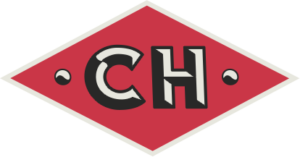Make Time to Work on How You Work

I recently had the privilege of spending time with an expert on attention management. She prompted my realization that a great many people don’t think about the different types of work they do — nor do they consider the conditions necessary for them to do their best work.
For example, I engage in four main categories of work. I think of them as:
- Creative
- Deep
- Administrative
- Facilitative/Performative
I’ll return to the four categories at the end of this article. For now, though, below are some considerations to enable you to better understand your work and what conditions you need to do an exemplary job.
Four Considerations and Questions to Uncover the Ideal Conditions for Optimal Work Performance
1. Type of Work — What Type(s) of Work Do You Do?
Do you pick up and put down phones all day long? Do you answer emails? Do you design “stuff”?
Chances are, you engage in more than one type of activity during your workday. What are they? Make a list.
Once you’ve listed your activities, group them into common categories and consolidate those categories. (See my four categories of work below for ideas to get your thought process started.) There is no “right” or “wrong” list. However, try to have as few categories as possible. Most people find they can group their activities into a fairly short categories list.
2. Time — When Is the Best Time to Do Each Type of Work?
After you’ve listed, grouped, and consolidated the types of activities you engage in daily, consider whether you naturally tend to do certain types of work at certain times of the day.
For example, I find creative work (brainstorming, writing, mapping, etc.) flows best for me between the hours of 8:30 am-12:30 pm. Be honest with yourself about when you best perform each type of work.
3. Environment — What External Conditions Are Best for Each Type of Work?
Do you like it warm? Do you like it cold? Do you like to work at a standing desk, or do you prefer to sit? What hue is the lighting? Is it natural or artificial? Do you enjoy having background music playing?
Questions like these are critical for understanding how you work best. Furthermore, your preferred environment might change depending on the type of work you’re performing.
For example, I do some of my best initial creative work while standing — or pacing — and dictating into the notes app on my phone. (I also prefer to have a full cup of black French press coffee in hand.)
4. Mental State and Preconditions — Is Your Mind Ready and Body Prepared?
“Mental state” is the most subjective and tricky condition to navigate. To assess yours, alternate between intervals of checking in with yourself and being candid about what you find.
Are you “feeling it”? Are you ready to do the type of work that’s necessary? If the answer is “no,” simply grinding through it may not be the best option.
Additionally, the preconditions necessary to do your best work are also important. Did you have proper rest last night? Are you exercising regularly? How well are you eating?
I make every effort to ensure I am in the proper mental state and the appropriate preconditions for me to be at my best are met before I begin an activity.
BONUS! Chad’s Four Categories of Work
Reflecting upon the questions centered on type, time, environment, and mental state and preconditions will help give you heightened awareness about your work and how you do your best work.
Now, as promised, here are the categories I’ve identified for my types of work. Yours may be different, but hopefully, this list will serve as a food-for-thought model as you create your own.
Category 1: Creative
My creative work occurs when I need to pull something out of thin air or create something new after synthesizing separate pieces of information and data sets. Here are a few examples of the kinds of creative work I do:
- Writing an article
- Mind mapping
- Brainstorming
- Analyzing and applying market research in a new way
Category 2: Deep
Deep work is when I need to focus. It is distantly different than creative work and involves:
- Learning something new
- Cranking out a proposal
- Crafting an organization’s Core Values
- Drafting a strategic plan
Category 3: Administrative
Administrative work is exactly what it sounds like. It is the business of administering my business and includes activities such as:
- Returning calls
- Answering emails
- Paying bills
- Updating CRM notations
Category 4: Facilitative/Performative
This category involves working with groups of two or more humans. Activities include:
- Chairing a Vistage peer group meeting
- Speaking to an audience or participating in a panel discussion
- Running a leadership retreat or strategic planning session
- Brokering a critical conversation between two or more leaders
Your Next Step Toward Doing Your Best Work All the Time
I realize self-reflective exercises like these can often be difficult to accomplish solo. If you find that to be the case, drop me a line. Together, we can work to determine your “sweet spot” for consistent high-performance work.
